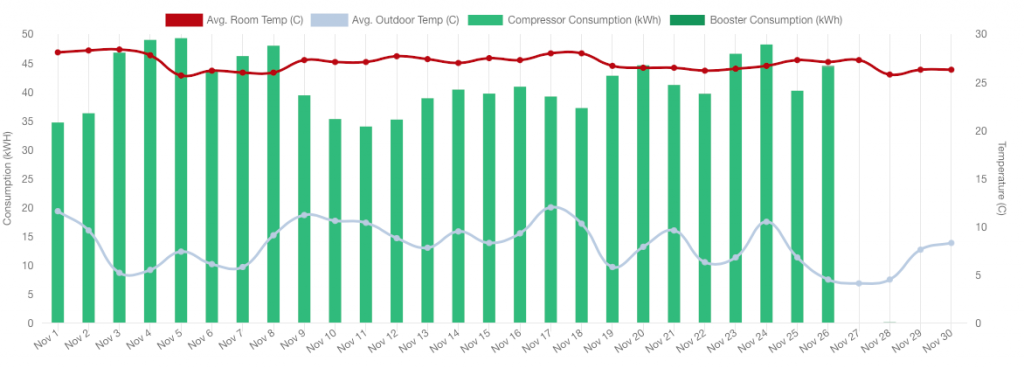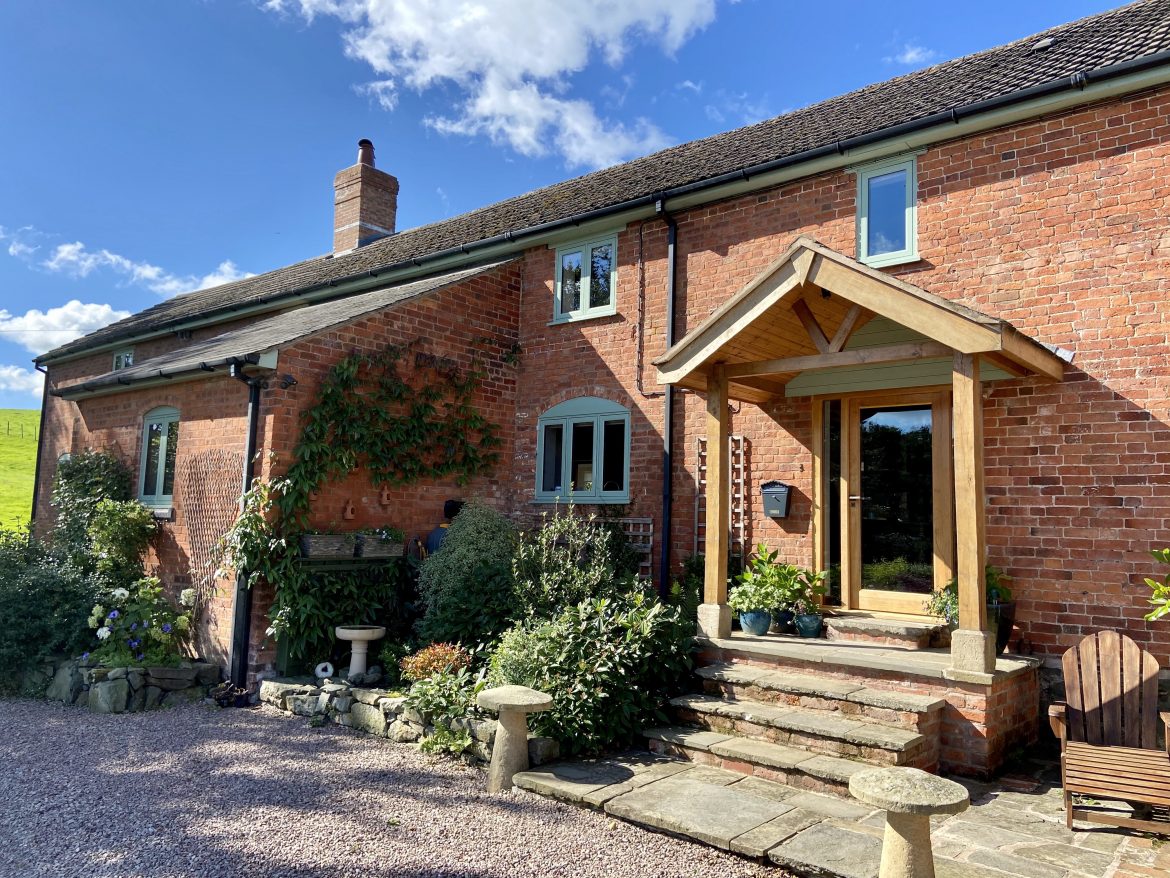As temperatures outside drop, our air source heat pump has had to kick into higher gear. As part of our ongoing series to share the efficiency and performance of our pump in a period property, we’ve shared our November numbers in this post.
The data for November is not 100% accurate because the electric meter counter stopped recording midway through November 27, 2020. Global Energy Systems rebooted the logging equipment remotely, so we’ve taken an average of the figures from November 27-December 1, 2020, to complete the picture.
If you’d like to see what our numbers were like last month, please refer to our October figures.
Our overall compressor consumption for November was 1,161.24 kWh which was up from October’s 1,031.50 kWh. This makes sense because the average outdoor ambient temperature dropped from 9.32C in October to 8.04 in November.

Based on our current electricity tariff of £0.165 that means we paid £191.60 to heat the entire house and hot water demand last month. The house, with the continued exception of the TV room, has remained at temperature (21C) in most areas, 24 hours a day, which we feel is reasonable.
The test, as it was last year, will be December, January and February. We have done a lot of work around the house to better insulate it, so it’ll be interesting to see if it reduces compressor consumption. Rooms do feel warmer, and stay warmer for longer.
We are still looking at new ways to improve the efficiency of our heating throughout the property. Watch this space.
